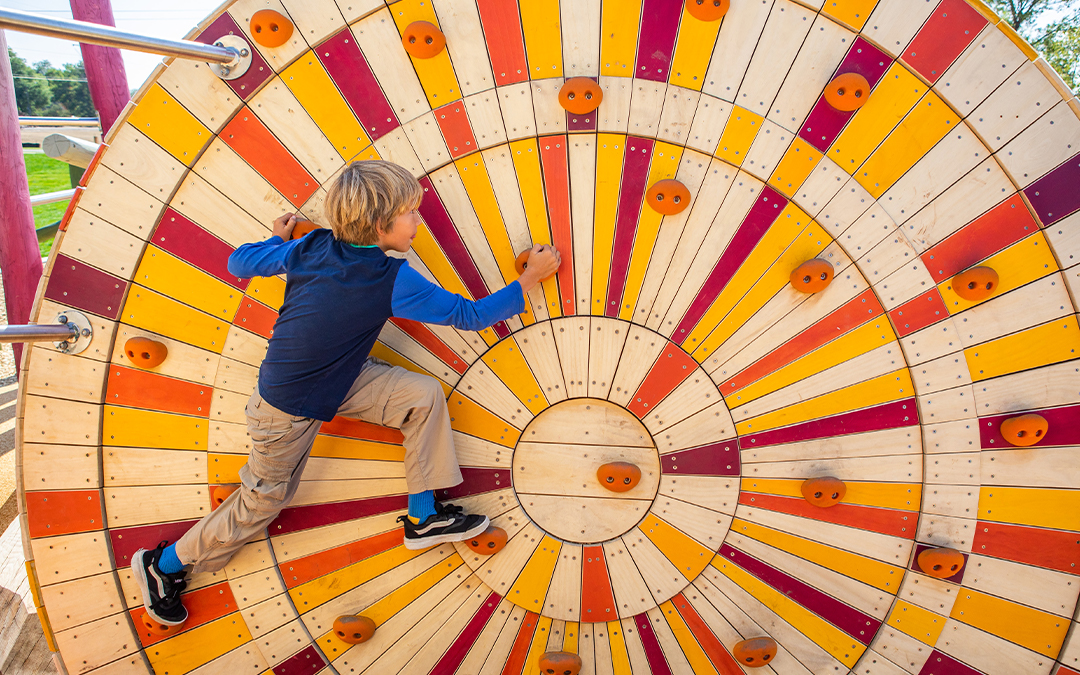
Wood Playgrounds and Vandalism
We regularly get asked about wood playgrounds and vandalism. How does wood hold up compared to more common materials like plastic and steel? Will my playground burn down? These questions are totally understandable. The wood playgrounds of yore were often constructed using splintery soft woods treated with preservatives like creosote. So, when people think of wood playgrounds now, some of those concerns still linger.
Why choose wood?
There are a lot of great reasons to choose wood for a playground. It looks beautiful and is inviting to the touch. It is a flexible and versatile construction material. Wood playgrounds demonstrate hand-craftiness unlike other materials. Wood can blend in, or stand out, depending on the desired aesthetic effect.
The woods of modern playgrounds, like the species that Earthscape uses, are more durable, naturally rot- and insect-resistant, and stand up do daily wear and tear. These species include black locust (Robinia pseudoacacia) and white oak (Quercus alba) – woods with proven track records for performance. Earthscape rigorously researches and tests our wood species before putting them to use because longevity and durability is key.
On the other hand, there’s nothing quite like discovering material properties via experimentation (read: blowing stuff up).
An Experiment in Material Durability
Protective equipment and licenses in hand, we decided to test the relative robustness of plastic, steel, black locust wood and cedar wood ourselves. How did they each hold up against gasoline, fire and the equivalent of one stick of dynamite? Check out our video and see for yourself!
